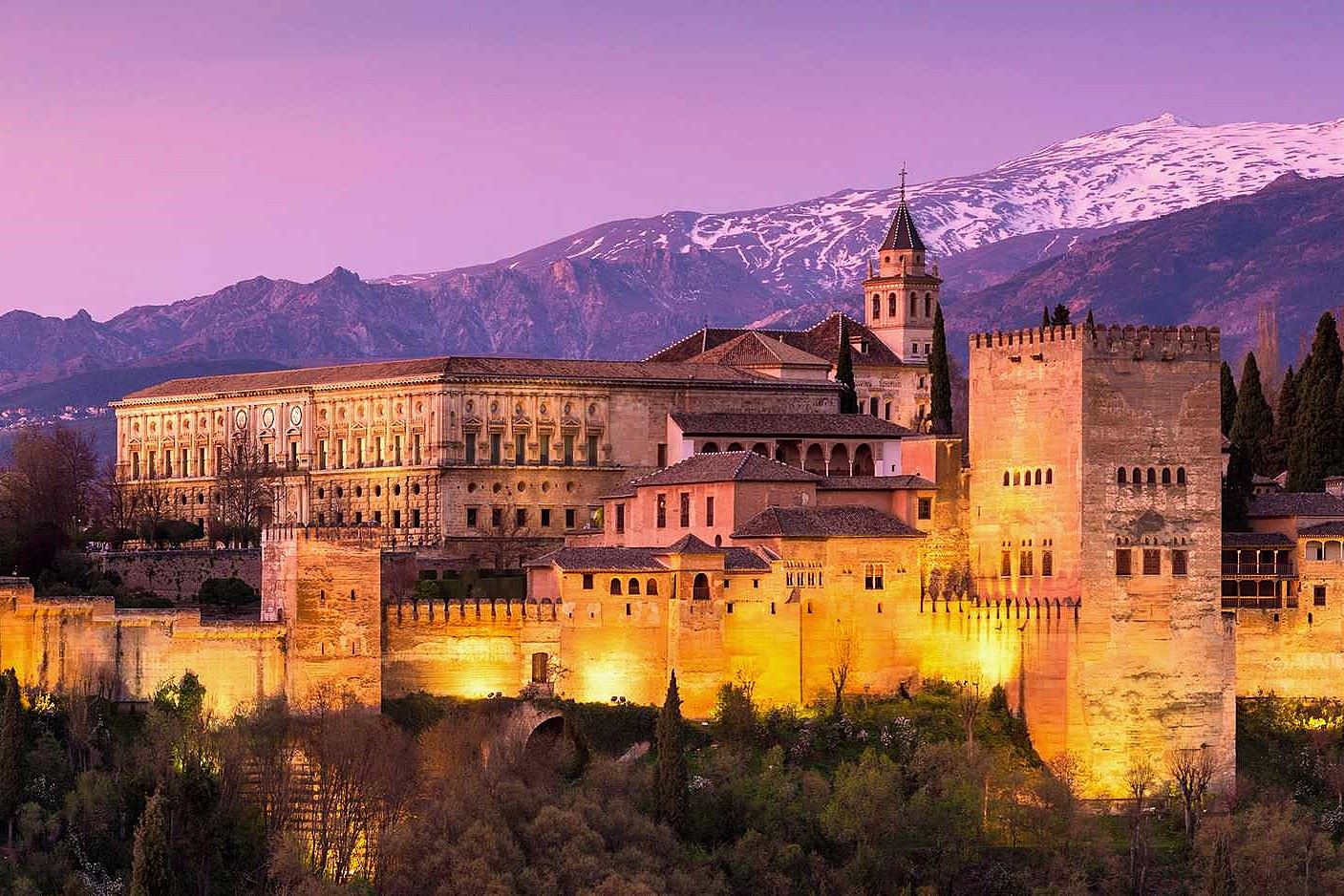
The Alhambra is a stunning palace and fortress complex located in Granada, Spain. Built during the mid-13th century by the Nasrid dynasty, it stands as a testament to Moorish architecture and artistry. Why is the Alhambra so famous? Its intricate tilework, lush gardens, and breathtaking views of the Sierra Nevada mountains make it a must-see. The Alhambra's history is rich with tales of sultans, poets, and conquerors. Visitors marvel at the Court of the Lions, the Hall of the Ambassadors, and the Generalife gardens. This UNESCO World Heritage site attracts millions annually, eager to experience its blend of history, culture, and beauty.
12 Facts about The Alhambra
The Alhambra's Origins
The Alhambra, a stunning palace and fortress complex, sits atop a hill in Granada, Spain. Its origins date back to the 9th century, but it gained prominence during the Nasrid dynasty.
-
The Alhambra was initially a small fortress built in 889 AD on the remains of Roman fortifications. It wasn't until the mid-13th century that it was transformed into a royal palace by the Nasrid emir Mohammed ben Al-Ahmar.
-
The name "Alhambra" comes from the Arabic "Al-Qal'a al-Hamra," meaning "The Red Castle." This name reflects the reddish hue of the walls, which are made from local clay.
Architectural Marvels
The Alhambra is renowned for its intricate architecture, blending Islamic art with Moorish influences. Each corner of the palace tells a story of craftsmanship and cultural fusion.
-
The Alhambra features a unique blend of Islamic architecture, including intricate stucco work, arabesques, and calligraphy. These elements showcase the artistic achievements of the Nasrid dynasty.
-
The Court of the Lions, one of the most famous parts of the Alhambra, contains a stunning fountain supported by twelve marble lions. This courtyard exemplifies the harmony and balance in Islamic architecture.
Gardens and Water Features
The Alhambra's gardens and water features are as impressive as its buildings. They reflect the Islamic paradise garden concept, symbolizing heaven on earth.
-
The Generalife, the summer palace and gardens of the Alhambra, is a masterpiece of landscape design. Its terraced gardens, fountains, and pavilions offer a serene escape from the palace's grandeur.
-
Water plays a crucial role in the Alhambra's design. The use of reflective pools, fountains, and channels not only cools the environment but also creates a sense of tranquility and beauty.
Historical Significance
The Alhambra has witnessed significant historical events and changes in power. Its walls have seen the rise and fall of empires.
-
The Alhambra was the last Muslim stronghold in Spain. In 1492, it was surrendered to the Catholic Monarchs, Ferdinand and Isabella, marking the end of Muslim rule in the Iberian Peninsula.
-
Washington Irving, the American writer, played a role in reviving interest in the Alhambra. His book "Tales of the Alhambra," published in 1832, brought the palace's beauty and history to a wider audience.
Preservation and Tourism
Today, the Alhambra is a UNESCO World Heritage Site and one of Spain's most visited tourist attractions. Efforts to preserve its beauty and history are ongoing.
-
The Alhambra was declared a UNESCO World Heritage Site in 1984. This recognition helps ensure the preservation of its architectural and cultural significance for future generations.
-
The Alhambra attracts over 2.7 million visitors annually. Its popularity as a tourist destination underscores its global cultural importance and the need for careful preservation.
Hidden Secrets
Despite its fame, the Alhambra still holds many secrets and lesser-known facts that intrigue historians and visitors alike.
-
The Alhambra's walls contain hidden messages and poems. These inscriptions, written in Arabic, praise the beauty of the palace and the greatness of its builders.
-
The Alhambra's design incorporates mathematical precision. The use of geometric patterns and symmetry reflects the advanced knowledge of mathematics and astronomy possessed by its architects.
The Alhambra's Lasting Impact
The Alhambra isn't just a historic site; it's a testament to architectural brilliance and cultural fusion. Its intricate designs, lush gardens, and storied past continue to captivate visitors from around the globe. This palace-fortress stands as a symbol of Spain's rich history, blending Islamic art with Christian influences.
From its strategic location overlooking Granada to the stunning Nasrid Palaces, every corner of the Alhambra tells a story of power, beauty, and innovation. Whether you're an architecture enthusiast, a history buff, or just someone who appreciates beauty, the Alhambra offers something for everyone.
Its enduring legacy reminds us of the importance of preserving our cultural heritage. So, next time you find yourself in Spain, make sure to visit this magnificent monument. You won't be disappointed.
Was this page helpful?
Our commitment to delivering trustworthy and engaging content is at the heart of what we do. Each fact on our site is contributed by real users like you, bringing a wealth of diverse insights and information. To ensure the highest standards of accuracy and reliability, our dedicated editors meticulously review each submission. This process guarantees that the facts we share are not only fascinating but also credible. Trust in our commitment to quality and authenticity as you explore and learn with us.


